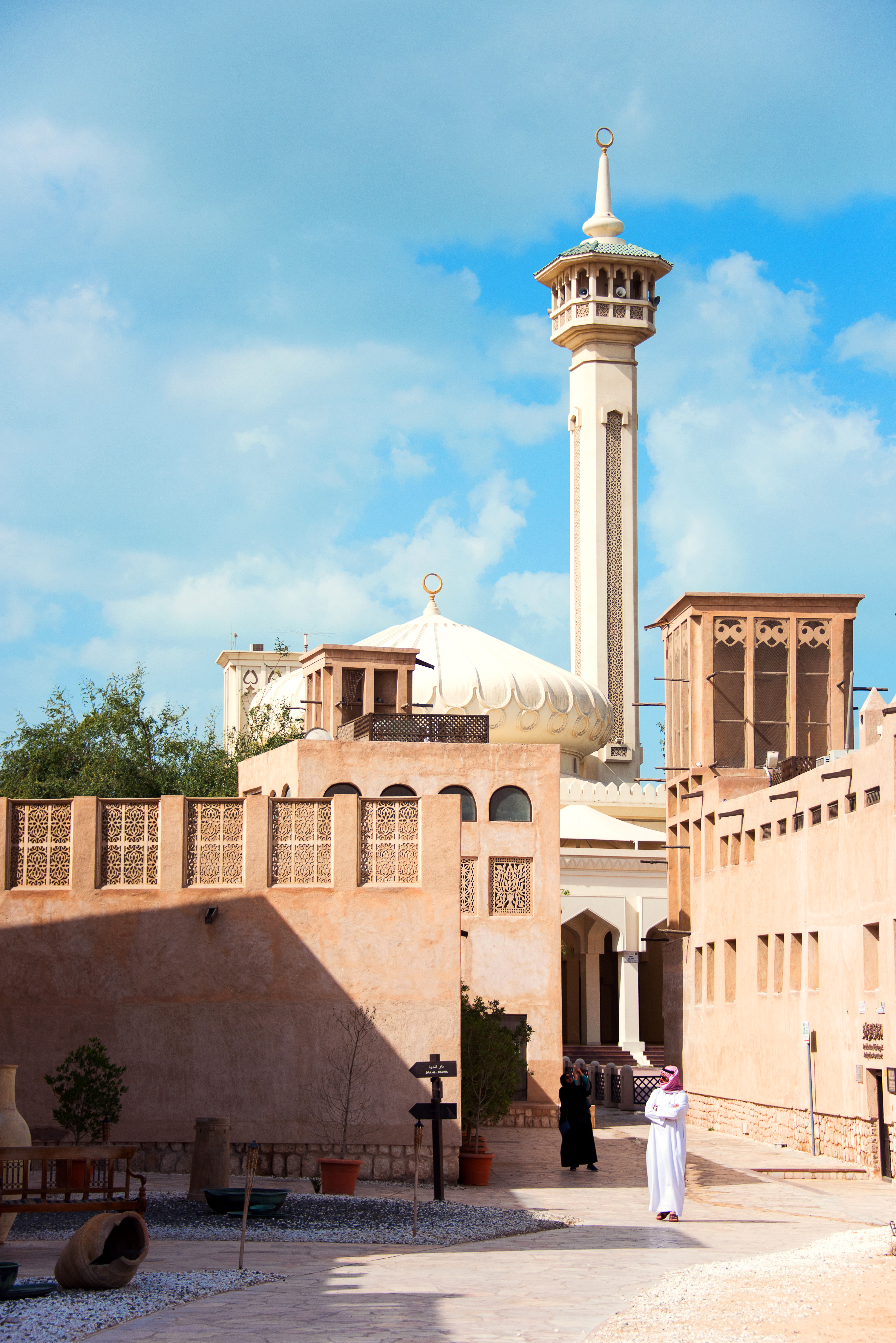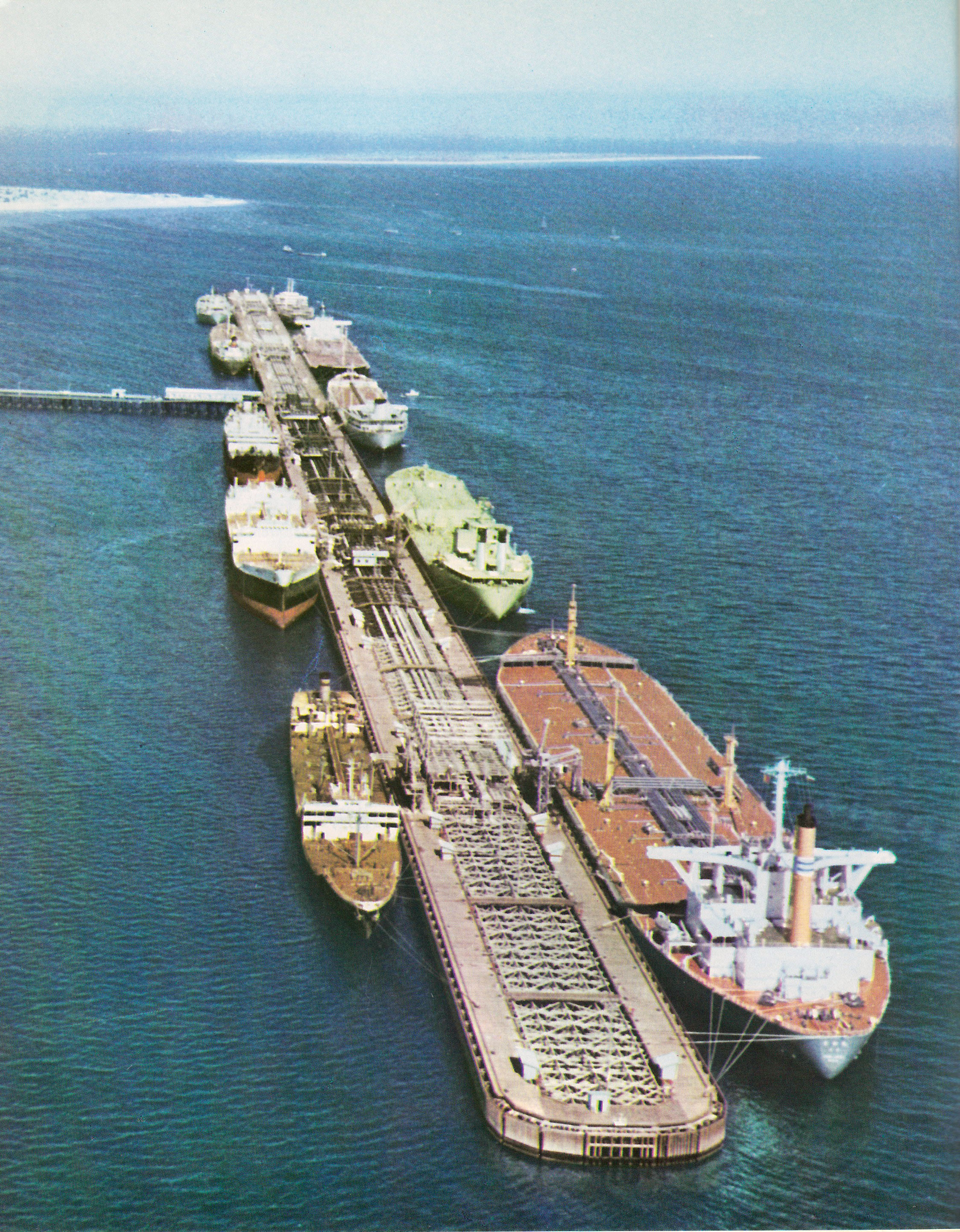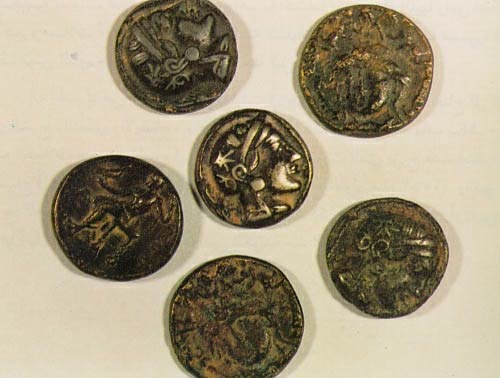|
Ayam (people)
Ajam of Kuwait or Ayam of Kuwait are Kuwaiti citizens of Iranian origin, who migrated to Kuwait over the past 300 years. Historically, Persian ports provided most of Kuwait's economic needs. Marafi Behbahani was one of the first merchants to settle in Kuwait in the 18th century. The majority of Shia Kuwaiti citizens are of Iranian ancestry. Some Kuwaitis of Iranian origin are Sunni Muslims such as the Al-Kandari and Al-Awadhi families of Larestani ancestry. Iranian Balochi families first immigrated to Kuwait in the 19th century. Some Kuwaitis of Iranian Balochi origin are Sunni. Although historically the term Ajam included both Sunni and Shia in Kuwait, nowadays in modern-day Kuwait, the term Ajam almost exclusively refers to Shia only; which is partly due to political sensitivities following the 1979 Iranian Revolution. Pre-oil Kuwait City Most Ajam (both Sunni and Shia) resided in the Sharq historical district in the old Kuwait City, thereby forming a linguistic enclave ... [...More Info...] [...Related Items...] OR: [Wikipedia] [Google] [Baidu] |
Abdulhussain Abdulredha
Abdulhussain Abdulredha ( ar, عبد الحسين عبد الرضا, ʿAbd al-Ḥussain ʿAbd ar-Riḍā; 15 July 1939 – 11 August 2017) was an iconic Kuwaiti actor. Background Abdulredha was born in Derwazat Al Abdulrazzaq, Al-Awazem village in Sharq, Kuwait, to Kuwaiti Ajam parents, the seventh among 14 siblings. He initially worked in the Department of Printing of the Kuwaiti Ministry of Guidance and Information. He then traveled on a mission to Egypt at the expense of the ministry in 1956 to learn the art of printmaking, and in 1961 he traveled on a mission to Germany to complete his studies in the printmaking arts.T. drb launched his fame technical Abdul Hussein Abdul Redha 408 Flavor act theatrical presence and charisma Journal Gazette – Issue 408 He continued this job until he reached the position of observer in the Printing Section of the Ministry of Information.T. artist Abdul Hussain Abdul Rida in brief, the Kuwaiti Al-Watan, entered into 19 February 2010 He marri ... [...More Info...] [...Related Items...] OR: [Wikipedia] [Google] [Baidu] |
Kuwait City
Kuwait City ( ar, مدينة الكويت) is the capital and largest city of Kuwait. Located at the heart of the country on the south shore of Kuwait Bay on the Persian Gulf, it is the political, cultural and economical centre of the emirate, containing Kuwait's Seif Palace, government offices, and the headquarters of most Kuwaiti corporations and banks. It is one of the hottest cities in summer on earth, with average summer high temperatures over 45 °C (113 °F) for three months of the year. As of 2018, the metropolitan area had roughly 3 million inhabitants (more than 70% of the country's population). The city itself has no administrative status. All six governorates of the country comprise parts of the urban agglomeration, which is subdived in numerous areas. In a more narrow sense, ''Kuwait City'' can also refer only to the town's historic core, which nowadays is part of the Capital Governorate and seamlessly merges with the adjacent urban areas. Kuwait City's ... [...More Info...] [...Related Items...] OR: [Wikipedia] [Google] [Baidu] |
Lurs
Lurs () are an Iranian people living in the mountains of western Iran. The four Luri branches are the Bakhtiari, Mamasani, Kohgiluyeh and Lur proper, who are principally linked by the Luri language. Lorestan Province is named after the Lurs, but the ethnic group also live in the provinces of Fars, Chaharmahal and Bakhtiari, Kohgiluyeh and Boyer-Ahmad, Khuzestan, Hamadan, Isfahan, Tehran and southern Ilam Province. Language Luri is a Western Iranian language continuum spoken by about four million people. The continuum constitutes the three dialects of Bakhtiari, Luristani and Southern Luri and linguist Anonby situates them between Kurdish and Persian. Luri branches There are several established branches of the Luri people. * Bakhtiari * Southern Lori ** Boyerahmadi (Yasuji) ** Kohgiluyei ** Mamasani * Luristani (Northern Lori) ** Khorramabadi ** Borujerdi ** Bala Gariva Lori ** Hinimini ** Shuhani History Lurs are a mixture of aboriginal Iranian tribes, o ... [...More Info...] [...Related Items...] OR: [Wikipedia] [Google] [Baidu] |
Ethnicities In Iran
An ethnic group or an ethnicity is a grouping of people who identify with each other on the basis of shared attributes that distinguish them from other groups. Those attributes can include common sets of traditions, ancestry, language, history, society, culture, nation, religion, or social treatment within their residing area. The term ethnicity is often times used interchangeably with the term nation, particularly in cases of ethnic nationalism, and is separate from the related concept of races. Ethnicity may be construed as an inherited or as a societally imposed construct. Ethnic membership tends to be defined by a shared cultural heritage, ancestry, origin myth, history, homeland, language, or dialect, symbolic systems such as religion, mythology and ritual, cuisine, dressing style, art, or physical appearance. Ethnic groups may share a narrow or broad spectrum of genetic ancestry, depending on group identification, with many groups having mixed genetic ancestry. Ethnic ... [...More Info...] [...Related Items...] OR: [Wikipedia] [Google] [Baidu] |
Larestani
Achomi ( fa, اچُمی), also known as Larestani and Khodmooni, is a Southwestern Iranian Persian language spoken by people in southern Fars and western Hormozgan and by significant numbers of immigrant groups in Kuwait, Bahrain, Iraq, Qatar, the United Arab Emirates and other Persian Gulf Arab countries. It is the predominant language of Larestan, Khonj, Gerash, Lamerd, and Evaz counties in Fars and Bastak County in Hormozgan Province. It is also spoken by some Huwalas in the Gulf countries. The majority of Achomi speakers are Sunni Muslims. Etymology and name of the language There are different ways to refer to this language. *Achomi: Native speakers often refer to their language as Achomi. There are different reasons for this name. One of them is the language's frequent usage of the ʃconsonant. The second reason originates from when Arabs began trading with Achomis. This because Arabs called Achomis 'Ajam', which means non-Arab. Therefore, Achomi is a variation of Aja ... [...More Info...] [...Related Items...] OR: [Wikipedia] [Google] [Baidu] |
Persian Language
Persian (), also known by its endonym Farsi (, ', ), is a Western Iranian language belonging to the Iranian branch of the Indo-Iranian subdivision of the Indo-European languages. Persian is a pluricentric language predominantly spoken and used officially within Iran, Afghanistan, and Tajikistan in three mutually intelligible standard varieties, namely Iranian Persian (officially known as ''Persian''), Dari Persian (officially known as ''Dari'' since 1964) and Tajiki Persian (officially known as ''Tajik'' since 1999).Siddikzoda, S. "Tajik Language: Farsi or not Farsi?" in ''Media Insight Central Asia #27'', August 2002. It is also spoken natively in the Tajik variety by a significant population within Uzbekistan, as well as within other regions with a Persianate history in the cultural sphere of Greater Iran. It is written officially within Iran and Afghanistan in the Persian alphabet, a derivation of the Arabic script, and within Tajikistan in the Tajik alphabet, a der ... [...More Info...] [...Related Items...] OR: [Wikipedia] [Google] [Baidu] |
Reza Shah
Reza Shah Pahlavi ( fa, رضا شاه پهلوی; ; originally Reza Khan (); 15 March 1878 – 26 July 1944) was an Iranian Officer (armed forces), military officer, politician (who served as Ministry of Defence and Armed Forces Logistics (Iran), minister of war and Prime Minister of Iran, prime minister), and first shah of the Pahlavi dynasty, House of Pahlavi of the Pahlavi Iran, Imperial State of Iran and father of the Mohammad Reza Pahlavi, last shah of Iran. He reigned from 15 December 1925 until he was forced to abdication, abdicate by the Anglo-Soviet invasion of Iran on 16 September 1941. Reza Shah introduced many social, economic, and political reforms during his reign, ultimately laying the foundation of the modern Iranian state. Therefore, he is regarded as the founder of modern Iran. At the age of 14 he joined the Persian Cossack Brigade, Iranian Cossack Brigade, and also served in the army. In 1911, he was promoted to first lieutenant, by 1912 he was elevated to the r ... [...More Info...] [...Related Items...] OR: [Wikipedia] [Google] [Baidu] |
Huwala
Huwala ( ar, الهولة, sing. Huwali هولي) also collectively referred to as Bani Huwala, is a blanket term usually used to refer to Iranian Arabs who originate from the Arabian Peninsula, initially migrating in the 13th and 14th century from Iraq and Arabia and intermixed with indigenous population of older Arabic background. Such migrations continued till around the 17th or 18th century to the area which is now the Hormozgan Province and Fars Province, mainly Bandar Abbas, Qishm and the mainland near Bandar Lengeh. The Huwala follows Sunni Islam, as opposed the majority Persian Twelver Shia and similar to Sunni Peninsular Arabs. Most of the Huwala have remigrated back to the Arabian peninsula between 1850-1900s. The imposition of restrictive economic policies by Reza Shah in the 1930s led to the migration of most of the Huwala back to the Arabian peninsula. Most of the Huwala Arabs settled in Iran for a period of time and intermarried with the indigenous Achomi and have ... [...More Info...] [...Related Items...] OR: [Wikipedia] [Google] [Baidu] |
Bandar Lengeh
Bandar Lengeh ( fa, بندرلنگه, also Romanized as Bandar-e Lengeh, Bandar-e-Langeh and Bandar Langeh; also known simply as Lengeh, Linja, Linjah or Lingah) is a harbour city and capital of Bandar Lengeh County, in Hormozgan province of Iran on the coast of the Persian Gulf. The harbor is from Lar, from Bandar Abbas, and from Bushehr. The weather in Bandar Lengeh is hot and humid, typical of coastal cities in southern Iran. At the 2006 census, its population was 25,303, in 5,589 families. History Lengeh was a center for trade between Oman and Iran for over 60 years, from 1759 to 1814. After 1814, Bandar Abbas played a major role in regional trade. Language The linguistic composition of the city: Gallery file:BandarLengeh-Beach-2.jpg, file:BandarLengeh-Beach-1.jpg, file:Fekri-Historical-House-1.jpg, file:BandarLengeh-Historical-House.jpg, file:Bandar-Lengeh-Mosque.jpg, File:BandarLengeh-Badgir.jpg, File:EbneAbbas-Mosque-BandarLengeh.jpg, Climate B ... [...More Info...] [...Related Items...] OR: [Wikipedia] [Google] [Baidu] |
Kharg Island
Kharg or Khark Island ( fa, جزیره خارک) is a continental island in the Persian Gulf belonging to Iran. The island is located off the coast of Iran and northwest of the Strait of Hormuz. Its total area is . Administered by the adjacent coastal Bushehr Province, Khark Island provides a sea port for the export of oil and extends Iranian territorial sea claims into the Persian Gulf oil fields. Located on Khark Island is Khark, the only city in the Khark District. History Mentioned in the '' Hudud al-'Alam'' as a good source for pearls around 982 AD, Khark was visited by the French traveller Jean de Thévenot in 1665, who recorded trade at the time with Isfahan and Basra. In 1753 the Dutch Empire established both a trading post and a fort on the island after securing perpetual ownership of the island from Mir Nasáir, the Arab ruler of Bandar Rig, in return for a present of 2000 rupees. In 1766 the Dutch fort was captured by Mir Mahanna, the governor of Bandar Rig. T ... [...More Info...] [...Related Items...] OR: [Wikipedia] [Google] [Baidu] |
Durham University
, mottoeng = Her foundations are upon the holy hills (Psalm 87:1) , established = (university status) , type = Public , academic_staff = 1,830 (2020) , administrative_staff = 2,640 (2018/19) , chancellor = Sir Thomas Allen , vice_chancellor = Karen O’Brien , city = Durham and Stockton-on-Tees , state = , country = England , campus_size = , students = () , undergrad = () , postgrad = () , free_label = Student newspaper , free = '' Palatinate'' , colours = Palatinate , endowment = £98.2 million , budget = £393.2 million , academic_affiliations = Russell Group ACU Coimbra Group EUA N8 Group Matariki Network of Universities University of the ArcticUniversities UK Virgo Consortium , sporting_affiliations = BUCS, Wallace Group , sports_free_label = Sports team , sports_free = Team Durham , website = , logo = , embedded = Durham University (legally the University of Durham) is a collegiate public research university ... [...More Info...] [...Related Items...] OR: [Wikipedia] [Google] [Baidu] |
Failaka Island
Failaka Island ( ar, فيلكا '' / ''; Kuwaiti Arabic: فيلچا ) is a Kuwaiti Island in the Persian Gulf. The island is 20 km off the coast of Kuwait City in the Persian Gulf. The name "Failaka" is thought to be derived from the ancient Greek – ' "outpost". Failaka Island is located 50 km southeast of the spot where the Tigris and Euphrates Rivers empty into the Persian Gulf. For thousands of years, the island has been a strategic prize to control the lucrative trade that passed up and down the Persian Gulf. Failaka Island has been a strategic location since the rise of the Sumerian city-state of Ur. History Antiquity Failaka has been a strategic location since the rise of the Sumerian city-state of Ur during the third millennium BC. Mesopotamians first settled in the Kuwaiti island of Failaka in 2000 B.C. Traders from the Sumerian city of Ur inhabited Failaka and ran a mercantile business. The island had many Mesopotamian-style buildings typical of those found ... [...More Info...] [...Related Items...] OR: [Wikipedia] [Google] [Baidu] |





